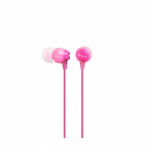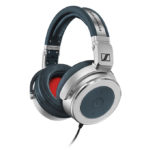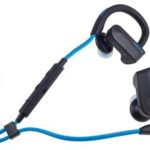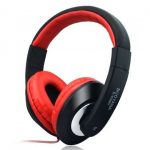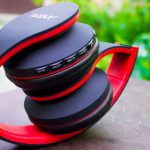Headphones have long been a part of our lives. And if 20 years ago these were bulky devices with low sound quality, now technologies have stepped far forward, giving us compact Bluetooth headsets with wide functionality. Today we will discuss which headphones are better - wired or wireless, and compare their characteristics.
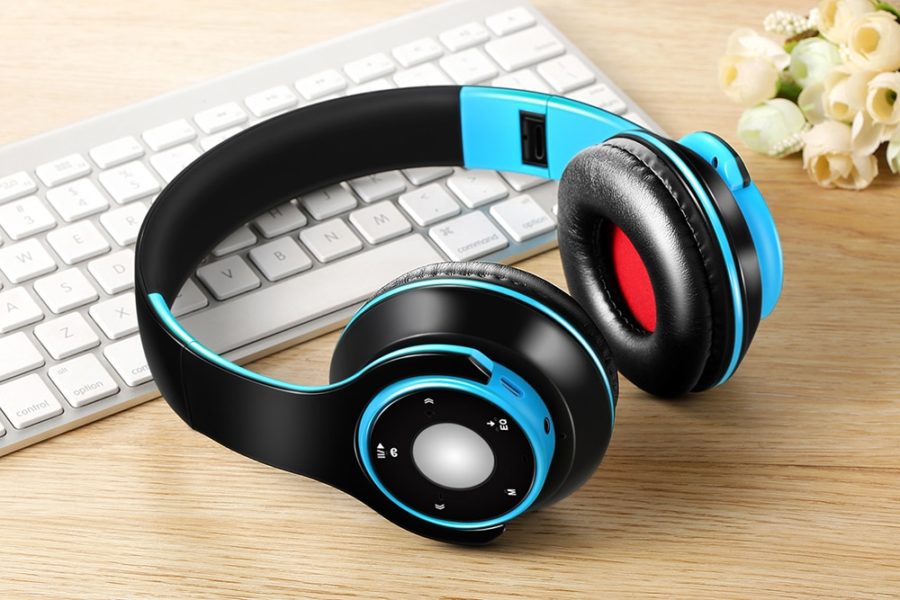
Content
Features wired and wireless headphones
The main feature of a wireless connection is the ability to transmit sound waves not using a cable, but through an analog or digital signal. To do this, they often use a Bluetooth module, because It is supported by most smartphones and laptops. Due to the absence of wires, these headphones are more convenient and durable. You can take them with you to the training session without worrying about tangling the cable. However, they sound worse when compared with wired counterparts.
Wired headphones are less comfortable than Bluetooth devices, but have better specs and lower cost. Sound in direct transmission is not recoded and retains its original quality. Of course, the presence of a wire cannot completely eliminate distortion, but it significantly reduces it.
Technical specifications for wired and wireless headphones
When choosing wired or wireless headphones, you must have at least a general idea of the technical characteristics. Sound quality depends on indicators such as frequency range, impedance, sensitivity, power and distortion percentage. Let's consider them in more detail:
frequency range
The frequency range is the frequency band that headphones can reproduce. The wider it is, the better and more detailed the sound. The standard value is from 20 to 20,000 Hz, but there are devices whose range exceeds 100,000 Hz. Often manufacturers overestimate indicators to attract buyers. When measuring, only the presence of a certain frequency is indicated, and not its volume. Therefore, it is better to focus on frequency response, if any.
Impedance
Impedance is an important indicator that affects the quality of reproduced sound and the consumption of electricity. It largely determines the compatibility of headphones with a smartphone or player. Any device has a conditionally supported range of loads. For portable equipment, headphones with an impedance of 16 to 32 ohms are suitable. Accordingly, for professional audio amplifiers, this figure will be higher.
Sensitivity
The sensitivity determines how loud the device can play music. The standard indicator for modern models is from 90 to 120 dB, but there are also quieter ones. The higher the sensitivity, the louder the sound and less load on the player (built-in amplifier). They also like to overestimate this characteristic. Usually the cheaper the headphones, the quieter they play.
Power
Headphone power is indicated in watts. It affects the quality and volume of the sound. The more watts, the faster the smartphone or player will discharge. It is better to choose devices with medium power if you do not plan to use an additional amplifier.
Distortion
Distortion is indicated as a percentage.It is influenced by many factors, including the characteristics of the built-in amplifier in the player or smartphone. The lower the percentage of distortion, the higher the playback quality. Good headphones have 1-2% distortion.
Models with the same specifications may sound different. Modern measuring devices so far cannot perceive sound in a complex way, as a person does. Therefore, before buying headphones, you must independently evaluate their quality in the store.
What are wireless headphones
Wireless headphones use three main types of communication - via Bluetooth, a radio signal and an infrared port. All of them have their advantages and disadvantages. Now in more detail:
- Bluetooth is the most common form of wireless connection. It provides a good working range (9-10 meters) and fits all smartphones. But, despite the versatility and ease of use, it is believed that Bluetooth is the worst transmit sound. Headphones with this type of connection are suitable for everyday life or sports. They can be connected both to a smartphone, and to a laptop or TV (if the module is built-in).
- Headphones with radio communications have high sound quality and a large working radius (up to 100 meters). But they are much more susceptible to various interference. Often come with a bulky amplifier. They will be a great solution for a home theater or TV.
- The infrared port has a small range, but transmits a signal without delay. Headphones with this type of connection are not intended for use outside the home. Suitable for TV or PC at a short distance.
Should I buy headphones with a Bluetooth connection for home? Yes, if you want to save on a portable amplifier. The only drawback is that there may be a slight delay in the sound.
Advantages and disadvantages of headphones
It is difficult to immediately determine which headphones are better - wired or wireless. You must be guided by the characteristics and functionality. We highlighted the common advantages and disadvantages of both types:
Wireless models
Benefits:
- Lack of wire. According to statistics, every third headphone malfunctions precisely due to damage to the plug. This does not threaten wireless models, as the cable at the entrance does not pinch or rub against clothing.
- The convenience of use. Wireless headphones can be taken for a run or training without worrying about where to put your smartphone. They do not depend on the length of the cable and operate within a radius of 9-10 meters.
- The increased functionality. Almost all Bluetooth headphones have voice control. Some models have a built-in pedometer or heart rate monitor.
Disadvantages:
- Working hours. Headphones must be constantly charged. They are not powered by a smartphone, like wired devices. In addition, the battery wears out over time and requires replacement. Average operating time - from 6-8 hours.
- Sound quality. Bluetooth headphones sound worse than wired ones.
- Cost. The price tag for Bluetooth devices is much higher.
Wired models
Benefits:
- High quality sound. The wire provides high fidelity sound.
- Affordable price. Using a Bluetooth module in a design is more expensive than using a cable. Therefore, wired headphones with equal characteristics will cost less than wireless.
- Connection stability. The transmitted signal is not interrupted, as is often the case with Bluetooth headphones.
Disadvantages:
- Risk of damage to the wire. Some manufacturers use an L-shaped plug to extend the life of the device.
- Not suitable for sports. The wire fetters movement and clings to clothes.
How to choose headphones
Since the audio market is littered with various types of headphones, it can be difficult to choose the right option. Here are some tips:
- Working hours. Wireless headphones are powered by built-in batteries. They are of two types - Li-Ion and Ni-Cd. It is better to give preference to Li-Ion batteries, asthey are lightweight and better tolerate recharging. The duration of the headphones depends on the battery capacity. It is indicated in ampere-hours (mAh or mAh). The larger the capacity, the longer the battery life.
- Design. All headphones can be divided into three types - earbuds (vacuum), full-size and overhead. For everyday wear, it is preferable to use inserts, as they are compact and do not put pressure on the ears. For the house, full-size or overhead are suitable.
- Sensitivity. The higher the sensitivity, the louder the sound. Most often, you can find devices with indicators from 90 to 120 dB. The volume also depends on the power of the built-in amplifier in the smartphone.
- Impedance. Any equipment has a permissible load limit. The higher the impedance, the more powerful the amplifier should be. Do not buy high-impedance headphones for low-impact portable devices. The acceptable value is from 16 to 32 ohms.
Headphone Rating
This rating contains the best wired headphones as of 2019-2018. Comparison of models was based on reviews and overall ratings.
Sony MDR-7506
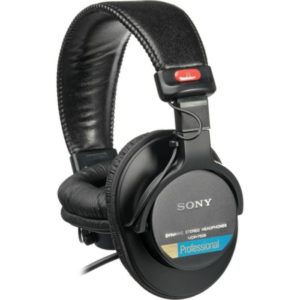
- Type of construction: full-size, dynamic
- Frequency range: 10 to 20,000 Hz
- Sensitivity Level: 106 dB
- Impedance: 63 ohms
- Membrane diameter: 40mm
- great sound;
- good sound insulation;
- workmanship.
- heavy twisted cord;
- low quality ear pads.
Professional stereo headphones for mixing and processing sound. Of the features - gold-plated connectors, wires made of oxygen-free copper and neodymium magnets. A carrying case is included.
Beyerdynamic DT 770 Pro

- Type: full-size, dynamic
- Frequency range: 5 to 35,000 Hz
- Sensitivity Level: 96 dB
- Impedance: 80 Ohm
- Power consumption: 100 mW
- surround scene;
- comfortable fit;
- excellent noise reduction.
- the sound is highly dependent on the amplifier;
- average volume.
Sennheiser Momentum 2.0 Over-Ear

- Type: full-size, dynamic
- Frequency range: 16 to 22,000 Hz
- Sensitivity Level: 113 dB
- Resistance: 18 Ohm
- IOS support: yes
- detailed sound;
- convenient design;
- Suitable for smartphones.
- poor quality of the replacement cable;
- require warming up.
Headphones have convenient controls adapted for iOS devices.
Denon AH-MM400

- Type: overhead, dynamic
- Frequency range: 10 to 40,000 Hz
- Sensitivity Level: 96 dB
- Impedance: 32 ohms
- Maximum power: 1000 mW
- Sound Membrane Size: 40 mm
- good sound quality;
- high-quality assembly;
- well suited for both a smartphone with a separate chip and a player.
- lack of a cable for a hospital;
- low quality microphone.
Fostex th-7
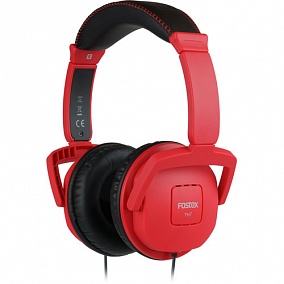
- Type of construction: full-size, dynamic
- Reproduced frequencies: from 10 to 35 000 Hz
- Sensitivity Level: 100 dB
- Resistance: 70 Ohm
- Maximum power: 100 mW
- Sound Membrane Size: 40 mm
- good sound for the money;
- comfortable fit;
- high-quality soundproofing.
- short wire;
- need a good amplifier.
Wireless Headphones Rating
The best wireless headphones as of 2019-2018.
Bose QuietComfort 35 II
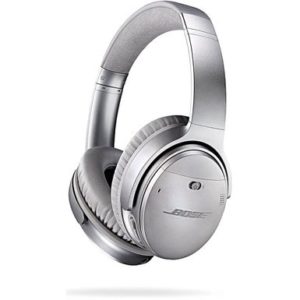
- Construction: Full Size, Dynamic
- Noise Reduction Type: Active
- Number of microphones: 2
- Functionality: voice control, universal button
- Work time: 20 hours
- 10 yd range
- active noise reduction;
- good sound quality;
- there is the possibility of working from a cable.
- cannot replace the battery;
- sometimes lose connection.
Apple AirPods
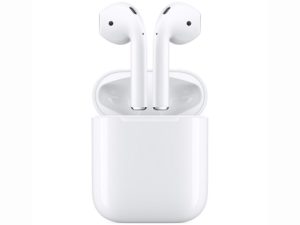
- Type: liners, dynamic
- Noise Cancellation Type: Passive
- Number of microphones: 2
- Functionality: voice control, automatic pairing, quick recharge in a case, instant access to Siri, Apple W1 processor, two optical sensors, built-in accelerometer
- Work time: up to 24 hours
- 10 yd range
- active noise reduction;
- Integration with Apple devices
- battery life.
- poor soundproofing;
- inconvenient design.
Marshall Major II Bluetooth

- Type: overhead, dynamic
- Frequency range: 10 to 20,000 Hz
- Sensitivity: 99dB
- Impedance: 64 ohms
- Functionality: voice control, repeat last number, answer / reset call, DSP
- Work time: from 10 hours
- 10 yd range
- good sound quality;
- convenient management;
- You can listen to music while charging.
- on the street, the sound may stutter;
- discomfort with constant wear.
Samsung EO-BG950 U Flex
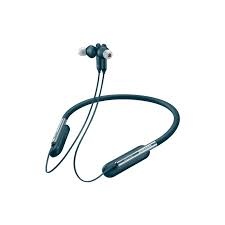
- Type: plug-in (vacuum), dynamic
- Functionality: voice control, universal button, microphone mute, answer / reset call, volume control
- Removable ear pads: 3 pairs
- Work time: from 10 hours
- 10 yd range
- good sound quality;
- excellent sound insulation;
- high duration of work;
- comfortable design.
- poorly isolate sound;
- the connection may be lost.
Inexpensive sports headphones with folding design. They have light indication and convenient Multipoint control.
Sony SBH24
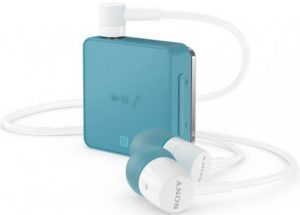
- Type: plug-in (vacuum), dynamic
- Functionality: voice control, radio, indication
- Removable ear pads: 3 pairs
- Work time: from 6 hours
- NFC Support: Yes
- 10 yd range
- comfortable shape;
- connection reliability;
- 6 hours of playback.
- short charging cord;
- sometimes interference occurs.
Output
Despite all the advantages of wireless headphones, they still lag behind wired sound quality. Therefore, do not buy bluetooth devices for mixing and processing music. A universal solution is a hybrid headphone with a removable cable. They are more convenient and more stable transmit the signal.
 |  |  |  |  |  |  |  |  |  |
|
| Title | Sony MDR-7506 | Beyerdynamic DT 770 Pro | Sennheiser Momentum 2.0 Over-Ear | Denon AH-MM400 | Fostex th-7 | Bose QuietComfort 35 II | Apple AirPods | Marshall Major II Bluetooth | Samsung EO-BG950 U Flex | Sony SBH24 |
| View | full size, closed | full size, closed | full size, closed | closed invoices | closed invoices | full-sized | open liners | closed invoices | plug-in (plugs) | plug-in (plugs) |
| Frequency Response Range | 10 - 20,000 Hz | 5 - 35000 Hz | 16 - 22000 Hz | 10 - 40,000 Hz | 10 - 35000 Hz | - | - | 10 - 20,000 Hz | - | 20 - 20,000 Hz |
| Sensitivity | 106 dB | 96 dB | 113 dB | 96 dB | 100 dB | - | - | 99 db | - | 100 dB |
| Impedance | 63 ohm | 80 ohm | 18 ohm | 32 ohm | 70 ohm | 32 ohm | - | 64 ohm | - | 16 ohm |
| Membrane diameter | 40 mm | 50 mm | 40 mm | 40 mm | 40 mm | - | - | 40 mm | 11 mm | 9.2 mm |
| Price | from 6900 rub. | from 11300 rub. | from 11850 rub. | from 27000 rub. | from 3550 rub. | from 19500 rub. | from 10400 rub. | from 7000 rub. | from 3450 rub. | from 2100 rub. |
